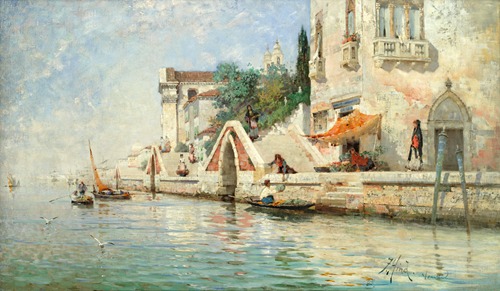Frank Hind
Frank Hind was an established artist of late-Victorian England and was particularly accomplished in the pastel medium. He played a part in the revival of the medium in the 1880s and participated in the large-scale pastel exhibitions held at the Grosvenor Gallery in London between 1888 and 1890, which marked the medium's rising popularity. He exhibited two works at the Grosvenor Gallery's pastel exhibition of 1888 and nine works in 1889.
Hind's subjects mainly comprise views from his travels, in Spain, Portugal, Morocco and Italy. His style in pastel is impressionistic, capturing the shimmering luminosity of light and vibrancy of colour in these warm climates.
In 1905 Hind moved to Granada and changed his name—a transformation that is shrouded in a degree of mystery. It is speculated that legal problems or a possible inheritance with the forced change of parentage for it to be effective, may be behind the change of identity.
In Granada, where he was affectionately referred to as 'Mister Frasquito', Wallis-Markland became good friends with the Spanish artist José María Rodríguez Acosta, who was some twenty years younger. It is probable that he also knew López Mezquita and other artists of the moment. It is thought that it was in Paris that he met the Spanish artist and poet Santiago Rusiñol (1861–1931), who was one of the leaders of the Catalan Modernisme movement. Among Rusiñol's favoured subjects were Spanish gardens, and in particular the structured gardens of the Nasrid dynasty. This had a great influence on Wallis-Markland, who turned his attentions to the gardens of Granada. He was also influenced by Rusiñol's interest in Symbolism and sensuous, poetic atmosphere in his works, often created through the strategic placement of colour and enigmatic, lone figures. Wallis-Markland collaborated with Rusiñol on a series of drawings at Granada, one of which—signed by both artists—is in the Museum of Fine Arts in Granada.
